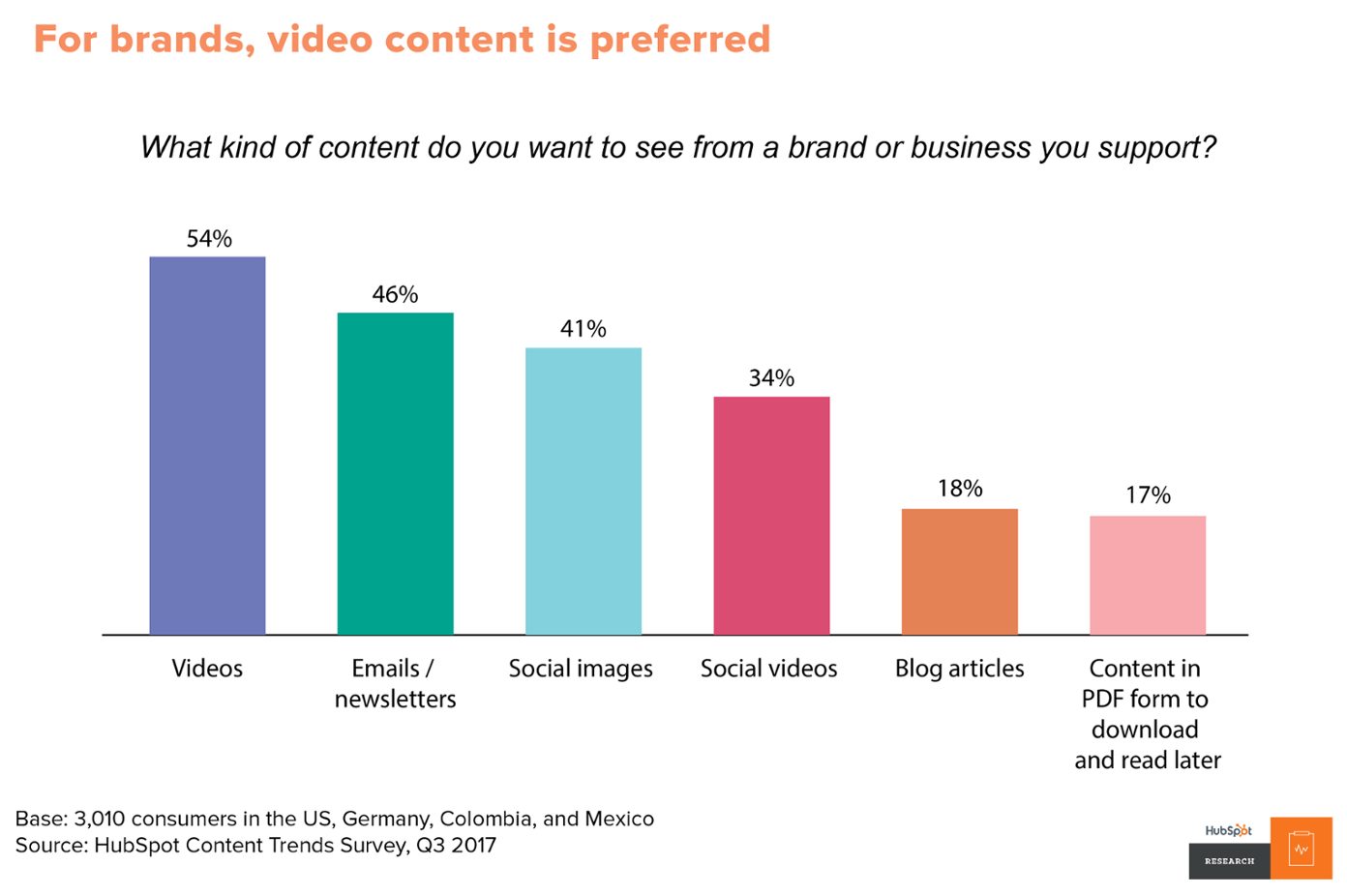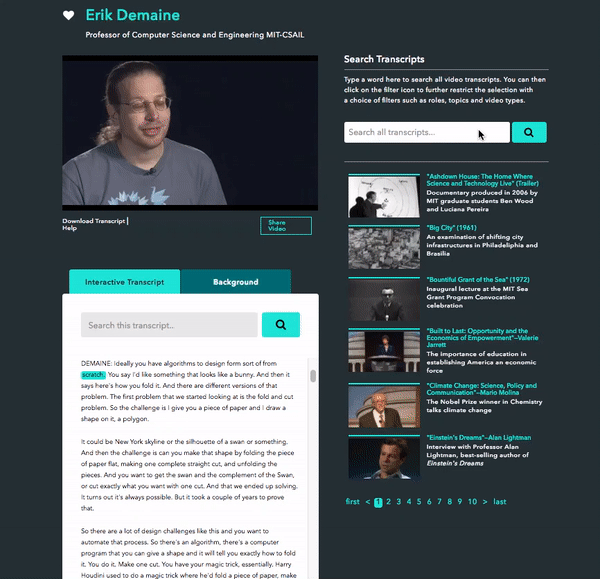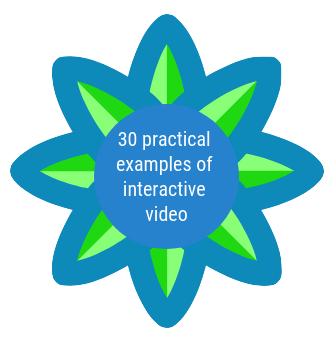[Infographic] Ultimate Guide to Video Engagement
Updated: June 26, 2024
Download infographic: The Ultimate Guide to Video Engagement
Streaming your favorite show, watching the latest game highlights, learning a DIY tutorial, or viewing your favorite brand’s new campaign – these are all just a few examples of video content we consume everyday. Our devices allow us to access video from anywhere in the world, making video content increasingly popular. 8 out of 10 video search results are conducted on YouTube, making the platform the second largest search engine in the world, after Google. There are 500 hours of video uploaded onto YouTube every minute. That’s a lot of video! According to Hubspot, more than 50% of consumers want to see video from brands more than any other type of content.
As video content continues to rise, it’s important that brands focus on creating the best experience for viewers. In order for viewers to engage with your video, you must deliver valuable and authentic content. Let’s dive into what goes into video engagement and how you can improve it.
Views
Views are a video engagement metric that determines the number of times a person watches a video. Typically, when a video has a large number of views, it’s a good indication that the video is engaging to viewers. Unless you are a large brand, views don’t come overnight. With so much content out there, how do you stand out amongst the competition and get your audience’s attention? Here are a few tips on how to improve views:
- Create captivating content and show the value right away
- Make your videos easy to find and accessible
- Have an appealing thumbnail
- Create a catchy title
- Optimize metadata for search
- Post consistently so your viewers now when to expect new content
Watch Time

Tips to improve watch time on videos:
Sessions
Another video engagement metric is Session Watch Time. Session Watch Time measures how a video contributes to the overall viewing session. To understand this further, ask yourself this: when someone watches your video, do they abandon the video platform and end the viewing session, or do they go on to watch multiple videos as a result of watching your video? In order to show search engines you have a high amount of video engagement, you should encourage your viewers to watch more relevant videos on your channel. Don’t send your viewers to your website unless it makes good business sense. Sending them away from the video sharing website will reduce your session watch time, potentially hurting your SEO. The goal of a video sharing platform, like YouTube, is to get people to spend as much time on their website as possible. The more videos people watch, the more time they spend on the website, discover more channels, and are exposed to more advertisements. In the end, your business will be rewarded by ranking higher in search results pages (SERPs).
Playlists are a great way to improve session watch time, resulting in more video engagement. Since the videos in your playlists are similar, they will be relevant to the video, and viewers will be more inclined to watch if they like the content of the video they’re currently watching. Once you grab their attention, it’s easier to push more content to them.
Interactive Transcripts
An interactive transcript is a time-synchronized transcript that coincides with the audio content of your video and highlights the text as it is spoken. It allows users to click on a keyword within the transcript or search for it in the search bar, and jump directly to where they want to be in the video. It creates a truly interactive experience for users and leads to more video engagement. Providing an interactive transcript not only benefits users, it’s also helpful for your SEO as well. Search engines are not able to decipher what is being said in a video. A transcript allows search engines to have a comprehensive overview of the spoken content in the video, and specific keywords that could be useful for the viewer. There are many benefits of interactive transcripts including:
- Makes video interactive
- Vastly improves SEO
- Makes it easier to find keywords
- Increases video engagement
- Increases the watch time of the video
- Helps organize content
- Makes video accessible
- Helps ESL viewers follow and fully comprehend content
Shares/Likes/Comments
Social media platforms and websites usually have a share icon which users can click to share content to other desired social networks. A like is a button that can be clicked on and indicates that the viewer reacted positively to the video. Comments are used on websites and social media so users can share their opinions, ideas, and interact with a community. Shares, likes, and comments show that your video has a lot of video engagement. The more you get, the more likely it is that your content is compelling. These don’t directly impact video rank, however, they tell you how your audience is responding to your content which can help you determine which content is or isn’t working. The more authentic and captivating your content is for your targeted audience, the more you can see shares/likes/comments increase, thus leading to more video engagement.
Searchability
Video search is increasingly becoming more important as online video proliferates. Search engines like Google and YouTube are tailoring SERPs to a searcher’s intent as opposed to exact keywords. For instance, if a searcher types “define social psychology” in a search bar, Google may find content that says, “a beginner’s guide to social psychology”. Although the title doesn’t use the same exact keywords, Google’s algorithm can understand the searcher’s intention. Relevant videos will still show up on SERPs based on other users’ past behaviors.
Instead of optimizing your video for search engines and stuffing keywords in your metadata, opt for creating truly valuable content. Not only will this help your video engagement, it’ll also help your video rank higher in search engines. If you want to create video content people want to see, there are many free ways to research keywords and get a sense of what people are searching for.
- Google Trends: check the volume of search queries on Google
- Auto-complete: start typing a query into Google or YouTube and see how the search auto-completes. Generally, the first few suggestions shown when you type will be the most searched for
- Keywordtool.io: a free keyword research tool that lets you check the volume of search queries for a given keyword
- AnswerThePublic: a free tool where you can find out what questions and queries people are searching for in search engines
- BuzzSumo: with a free account, you can find the most popular content using specific keywords. It’s a great way to get ideas for creating your own video content
Search Engine Optimization (SEO)
Search Engine Optimization, also known as SEO, is a marketing term for increasing traffic to your video through organic search engine results. SEO is not about attracting everyone to your video; it’s about finding quality visitors that are actually interested in your content. Metadata and user engagement are two factors that play a role in video SEO. Video metadata includes titles, tags, descriptions, captions, transcripts, thumbnails, etc. Although metadata is important, it’s not always reliable so it holds less weight than user engagement. Some people lie in their metadata to trick search engines or just aren’t savvy in SEO concepts.
A significant part of video engagement and ranking is determined by how users interact with your content. Ultimately, your viewers determine how you rank on SERPs. Some brands tend to focus on getting their videos perfectly optimized, but wonder why they don’t rank high in search results. You must also provide an engaging user experience as well.
When a video is first indexed, search engines only have metadata to determine the topic and value of data. Once videos are published, search engine algorithms are good at detecting videos that actually have high video engagement, and aren’t just clickbait. All in all, optimize your video for humans, not robots. Quality content provides an enjoyable experience for your viewers, resulting in more video engagement.
Interactive Video
Interactive video is a new form of video brands use that’s great for video engagement. It gives viewers the ability to interact with the video through different tools. Users can click, drag, scroll, and enter text in order to fully engage with the video. Examples could be downloading a form through the video or taking a quiz. 70% of marketers say that interactive video engages audiences “well” or “very well”. Traditional videos only give viewers the option to play, pause, fast forward, rewind, and restart the video. There isn’t much they can do to interact with the video beside the basic functions. There are several functions you can build into an interactive video. Here are the most common:
- Hotspots: clickable areas within a video that take the viewer to a separate webpage or reveal content directly within the video
- 360 view: the ability for users to drag the screen within the video and see a video frame in different directions
- Branches: unique paths viewers take to customize the content they see
- Data inputs: form fields viewers can use to enter information
- Quizzes: personalized assessments at the middle or end of the video used to test knowledge learned from the video
Interactive video gives your brand the ability to create a fun, memorable, and engaging experience for your audience. Follow these best practices to make the most out of your interactive video and increase video engagement.
- Design with the user in mind
- Gamify the user experience
- Make it fun and engaging
- Let users become apart of the story
Virtual Reality (VR)/360 Video
If you really want to take your video engagement to the next level, 360 video and virtual reality are the way to go. 360 video records in all directions, giving the viewer a 360 degree view of wherever they look. Viewers can control what they watch from different perspectives by clicking and dragging their mouse left and right – just like a panorama.
Experience 360 Video:
Similar to 360 video, virtual reality (VR) is an interactive 3D digital environment where the user has the freedom to move around freely, and perform a series of actions – just like real life. Using a headset, VR is a great way for users to fully immerse themselves in an experience and is great for video engagement. VR is used for gaming, education, showcasing new products, and much more.
Experience Virtual Reality:
While both of these forms of video help video engagement tremendously, accessibility hasn’t been at the forefront of these innovations. Learn how to caption 360 video and virtual reality without disrupting the user experience.
Captions
Captions convert the audio content of a video into time-synchronized text displayed on the screen. It is useful for individuals who are deaf or hard of hearing and aren’t able to hear the audio content. Captions make your video accessible to a wider audience. 5% of the global population has some form of hearing loss, and there are more than 36 million Americans who are deaf or hard of hearing. That is a lot of people that can’t fully enjoy your video if it’s not captioned. Captions provide an equal viewing experience for all viewers as long as they’re accurate and correctly synced with the video. The more accessible your video is, the more people are able to view your content, and the more video engagement your video will get.
Many people who use captions don’t report having hearing loss. According to the United Kingdom’s Ofcom, 80% of people who watch video with closed captions on are not deaf or hard of hearing. Smartphones and tablets allow people to access video anywhere in the world, which means they can consume content in places they frequent the most. Some of these places may be sound sensitive environments, like:
Did you know that videos with closed captions boost video SEO? According to a study conducted by Discovery Digital Networks, YouTube videos that were captioned measured an increase in SEO as opposed to videos without captions. The study found that videos with captions had a 13.48% increase in views within the first 14 days of being published. Remember, search engines aren’t able to watch videos. Google indexes YouTube videos with closed captions, which makes them more likely to rank higher on SERPs for relevant keywords.
In order for captions to be useful, they must be accurate. YouTube offers automatic captioning for videos, but they are known to be very inaccurate. Not only does it decrease video engagement by making your content inaccessible, it also negatively impacts SEO. There are many resources available to add captions to your video, like doing it yourself or hiring a professional transcription service.
Download our infographic: The Ultimate Guide to Video Engagement
Please email [email protected] for an accessible version of this infographic.
_________________________________________________________________
Get started with 3Play today!















